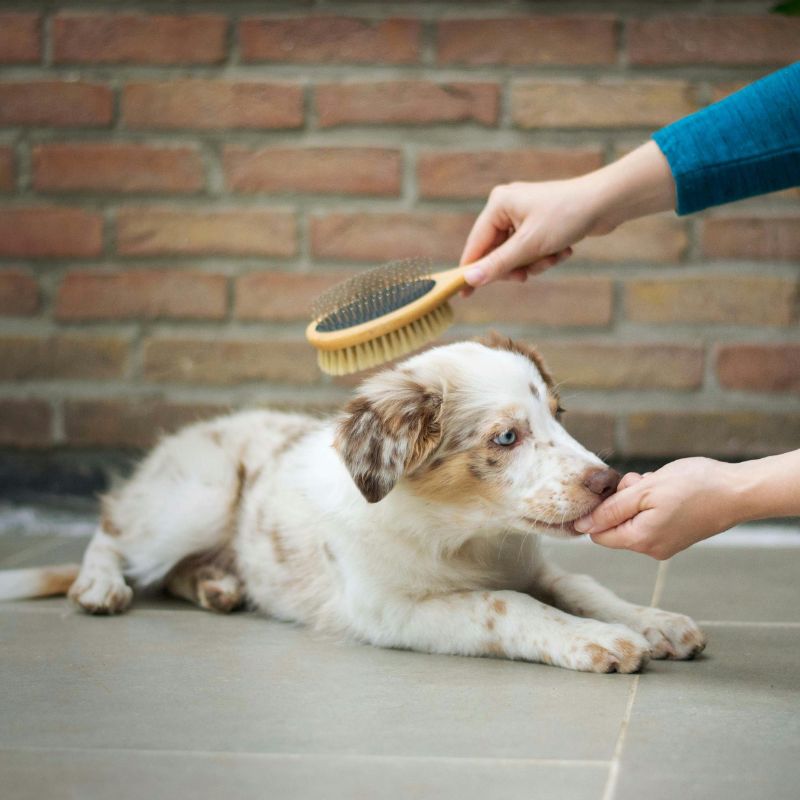Nail trimming is a necessary part of dog grooming that often turns into a stressful ordeal for both dogs and their owners. As a professional involved in Dog Training in Tampa FL, I’ve encountered many dogs that exhibit anxiety, fear, or even aggression when it’s time to trim their nails. This discomfort can stem from various factors, including past traumatic experiences, sensitivity in their paws, or simply a lack of familiarity with the process. However, with patience, the right techniques, and consistent training, you can help your dog become more comfortable with nail trimming. Here’s how to approach this common challenge in a way that ensures both you and your dog remain calm and stress-free.
Understanding the Root of the Problem
Before diving into the training process, it’s important to understand why dogs often dislike nail trimming. Many dogs find nail trimming uncomfortable because they’re not accustomed to having their paws handled. Some may have had a painful experience in the past, like having a nail cut too short. Others might react to the restraint involved in the process, feeling trapped or threatened, which can lead to anxiety or aggression.
Recognizing these potential triggers allows you to approach nail trimming with greater empathy and patience, which is crucial in helping your dog overcome their fear.
Step 1: Gradual Desensitization
The first and most crucial step in making your dog comfortable with nail trimming is gradual desensitization. This process involves slowly getting your dog used to having their paws handled and the sight and sound of nail clippers.
- Start with Touching: Begin by gently touching your dog’s paws without trying to clip their nails. Reward them with treats and praise to create a positive association with paw handling.
- Introduce the Clippers: Once your dog is comfortable with having their paws touched, introduce them to the nail clippers. Let them sniff and investigate the clippers without using them. This step helps the dog associate the clippers with something non-threatening.
- Simulate the Motion: Before actually trimming, simulate the action by tapping the clippers on their nails lightly. This familiarizes your dog with the sensation and sound of the clippers, reducing fear when you eventually use them.
Consistency is key in this process. Regularly practicing these steps in short sessions helps your dog become more relaxed and comfortable with each stage.
Step 2: Positive Reinforcement
Positive reinforcement is a powerful tool in dog training, especially when addressing issues related to fear and anxiety. During the nail-trimming process, use treats, praise, and affection to reward your dog for calm behavior.
- Reward Calmness: Every time your dog allows you to handle their paws or bring the clippers close without showing signs of distress, reward them immediately. This reinforcement encourages them to associate the experience with positive outcomes.
- Take Breaks: If your dog shows signs of discomfort, take a break and try again later. Forcing the process can create negative associations, making future attempts more difficult.
- Build Trust: The more your dog trusts you during this process, the more comfortable they’ll become. Patience and gentle handling build this trust over time.
Positive reinforcement not only makes the experience more pleasant for your dog but also strengthens the bond between you and your pet.
Step 3: Training Techniques for Aggressive or Anxious Dogs
If your dog is particularly anxious or aggressive during nail trimming, you might need to employ more specialized techniques as part of your dog aggression training in Tampa.
- Use of a Muzzle: In cases where aggression is severe, using a muzzle can be a safe way to protect both you and your dog while you work on desensitization and training.
- Calming Aids: Some dogs benefit from calming aids, such as pheromone sprays or anxiety wraps, which can help reduce stress levels during grooming sessions.
- Professional Help: If your dog’s aggression is beyond what you can manage at home, consulting a professional dog trainer is advisable. A trainer can develop a customized plan that addresses your dog’s specific triggers and aggression issues.
Aggression during nail trimming can often be a sign of deeper behavioral issues, so addressing these with the help of a professional can lead to more comprehensive and lasting solutions.
Step 4: Proper Equipment and Techniques
Using the right tools and techniques can make a significant difference in your dog’s comfort during nail trimming.
- Choose the Right Clippers: Ensure that you are using high-quality clippers that are appropriate for your dog’s size and nail thickness. Dull or poorly fitting clippers can cause discomfort, making the experience more stressful.
- Consider a Dremel: Some dogs respond better to a Dremel tool, which grinds the nails down slowly rather than clipping them. The noise and vibration may take some getting used to, but many dogs prefer this method once acclimated.
- Clip Gradually: Instead of trying to trim all the nails in one session, start by clipping just one or two nails at a time, especially if your dog is nervous. Gradually increase the number of nails trimmed as your dog becomes more comfortable.
- Stay Calm and Confident: Dogs are incredibly perceptive and can pick up on their owner’s emotions. Staying calm and confident during nail trimming helps convey to your dog that there is nothing to fear.
Using the right equipment and maintaining a steady, calm demeanor can greatly reduce your dog’s anxiety during nail trimming.
Step 5: Regular Practice
Like any training, regular practice is crucial. The more frequently you work on nail trimming, the more familiar and comfortable your dog will become with the process.
- Incorporate it into Routine: Make nail trimming a regular part of your dog’s grooming routine. Even if you’re only trimming one nail at a time, consistent exposure is key.
- Short Sessions: Keep sessions short and positive, gradually building up to trimming more nails as your dog’s comfort level increases.
- Monitor Progress: Pay attention to how your dog reacts during each session. If they are becoming more relaxed, you’re on the right track. If anxiety persists, consider revisiting some of the earlier desensitization steps.
Regular practice not only helps your dog get used to nail trimming but also allows you to refine your technique and approach, making the process smoother over time.
Training a dog to be comfortable with nail trimming takes time, patience, and the right approach. For those involved in dog training in Tampa, understanding the individual needs of each dog is key to a successful grooming routine. Whether your dog needs simple desensitization or more advanced dog aggression training in Tampa, the goal is to create a stress-free experience that keeps your dog’s nails healthy and your relationship strong. With consistent practice, positive reinforcement, and the right tools, nail trimming can become just another routine part of your dog’s care rather than a dreaded event. Learn more about how to get your dog to be comfortable with nail grooming by contacting us today.

